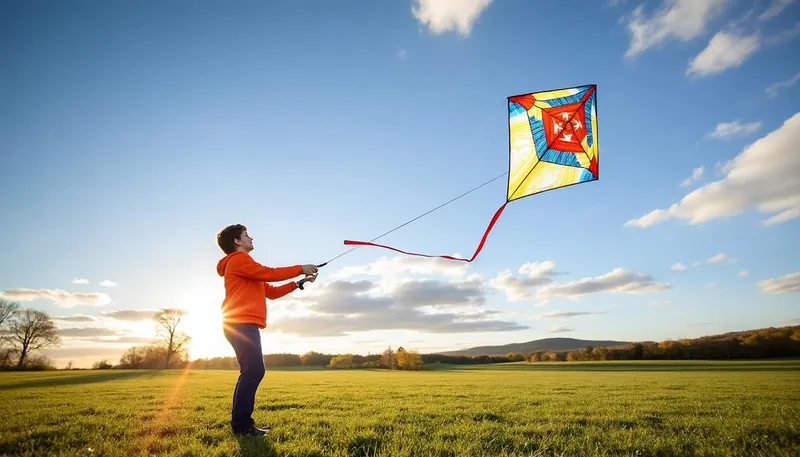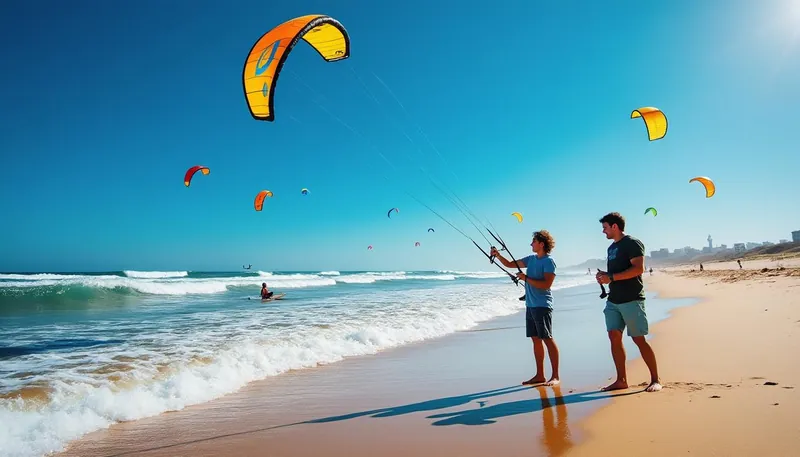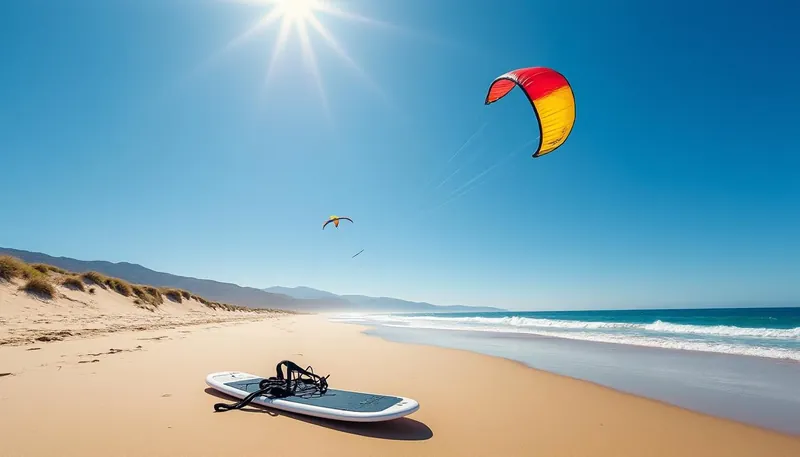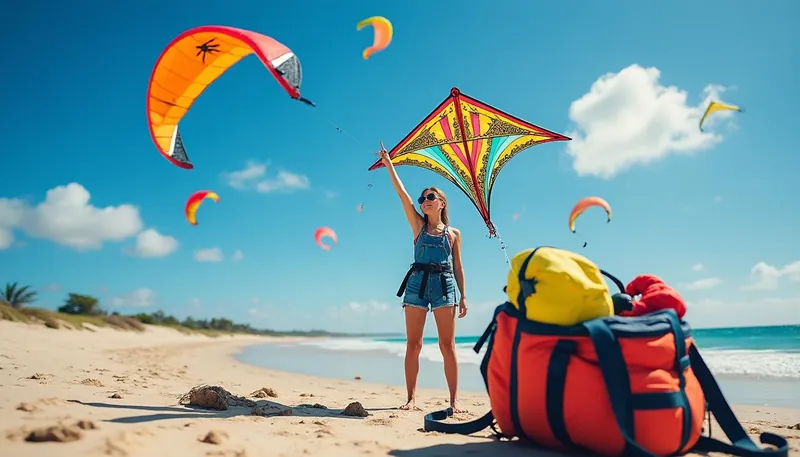Traction kiting is one of those exhilarating sports that makes you feel alive, as you harness the wind and let it propel you across land, snow, or even water. But, is it really suitable for beginners, or does it require a specific skill set that only seasoned kite fliers possess? The short answer? Yes, traction kiting can indeed be suitable for beginners, but not without considering a few important factors. Many individuals might be drawn to the thrill of power kiting, but it’s crucial to understand how to start safely and effectively. This guide will help you navigate the ins and outs of getting into traction kiting, including the best starter equipment, safety considerations, and common pitfalls. Get ready for a thrilling adventure!
In Brief:
- Traction kiting utilizes the wind’s power to pull the flyer for various activities.
- There are beginner-friendly kites available to ensure a smooth learning curve.
- Safety precautions like wearing protective gear and understanding kite control are essential.
- A thorough knowledge of wind conditions and kite handling will enhance your experience.
- Practicing with smaller kites is beneficial before progressing to advanced models.
Understanding Traction Kiting: What Is It?
Traction kiting is a thrilling sport where a specially designed kite propels participants across a surface. This includes activities on land, water, or snow. The appeal lies in its exhilarating combination of flying and speed. Whether it’s snow kiting, landboarding, or kitesurfing, you’ll find the kite is what provides the power. The kite is controlled by lines that connect to handles or a control bar, allowing virtually anyone to experience the rush of being pulled by the wind.
Types of Traction Kites
There are several types of traction kites designed for various activities, and each one can be a great option for beginners, provided that the appropriate safety measures are taken. Here’s a closer look:
- Foil Kites: These are perhaps the most popular types of traction kites because of their efficiency and stability. They use the air pressure created when wind flows through the canopy to generate lift. Foil kites are often more maintainable and forgiving for newcomers.
- Ram-Air Kites: These kites are designed to remain inflated with a constant flow of air. They are generally easier for beginners to manage, making them an ideal choice for those just starting out.
- Power Kites: These are specifically tailored for traction activities. They can range in size and power, allowing beginners to select a kite suited to their weight and skill level.
How They Work
Traction kites harness wind power to create a pull force that can be used for different activities. The flyer controls the kite with an intuitive maneuvering of the handles or control bar, while gaining speed by either running, riding a board, or using a buggy. To maximize safety, understanding proper kite control techniques is paramount, ensuring that the kite doesn’t overpower you and that you maintain a sense of balance and control.

Choosing the Right Kite for Beginners
Choosing the right kite is crucial for beginner traction kiters to enjoy their experience. Various factors like size, design, and the amount of pull they generate can significantly influence the ease of flying and learning control. It’s essential to consider the right equipment that will offer a forgiving learning curve.
Recommended Kites for Newcomers
Here’s a list of top gear options specially suited for beginners:
- PKD Buster Soulfly: This kite is designed with stability in mind. It offers an excellent all-around performance, making it a top choice for beginners.
- Flexifoil Rage: Perfect for novice fliers, these kites are user-friendly and offer great handling at moderate wind speeds.
- HQ Beamer: Known for its reliable lift, the Beamer is a fantastic entry point for those starting traction kiting.
Kite Size Recommendations
When selecting a traction kite, size matters significantly because it influences the power output—and subsequently how easy it is to control. Here are sizes recommended for beginner fliers:
| Kite Size (m²) | Wind Speed Range (mph) | Recommended Use |
|---|---|---|
| 2.5 – 3.0 | 5-20 | Beginner Practice & Training |
| 4.0 | 5-15 | Light Wind Days |
| 6.0 | 10-20 | Intermediate Flyers |
Safety Considerations for Beginners
Safety should always be a top priority in any sport that involves handling powerful equipment like traction kites. Unlike recreational kites, traction kites generate significant pull, which can be overwhelming for inexperienced users. Therefore, adhering to safety protocols can prevent injuries and ensure a more enjoyable experience.
Essential Safety Gear
As a beginner, you’ll want to equip yourself with appropriate safety gear. Here’s a checklist:
- Helmet: Protects your head from potential impacts when you’re becoming accustomed to controlling the kite.
- Gloves: Useful for better grip and protection against the lines.
- Sturdy Footwear: Ensures a firm base, preventing slips when maneuvering.
- Wetsuit or Quickly Drying Clothes: If you’re hitting the water, this provides warmth and flotation.
Kite Control Basics
Before heading out, familiarize yourself with fundamental kite control techniques. The following steps will ensure you’re adequately prepared:
- Practice launching and landing your kite on the ground.
- Control the kite by driving it side to side to understand how it reacts to your movements.
- Utilize practice sessions in safe, open areas to minimize hazards and distractions.
Understanding Wind Conditions for Traction Kiting
Weather and wind conditions can change rapidly, so knowing how to read the weather is essential for any kiter—especially beginners. Understanding these parameters can drastically enhance your overall experience.
Optimal Wind Conditions
Here are some parameters to keep in mind:
- Light Winds: These are ideal for starting out—think 5-10 mph. It allows beginners to familiarize themselves with kite handling.
- Moderate Winds: Winds of 10-15 mph can offer a challenge but are manageable to help you gain confidence and experience.
- Strong Winds: Anything over 20 mph can be unsafe for inexperienced fliers. Always avoid these conditions until you’ve mastered the basics.
Adjusting to Changing Conditions
Adaptation is part of the learning process! Always be prepared to adjust your technique according to wind changes. If conditions become too breezy for comfort, it’s best to take a break or call it a day. Remember: better safe than sorry!

What is the best beginner traction kite?
The PKD Buster Soulfly is highly recommended for beginners due to its stability and ease of control.
Is it safe for kids to try traction kiting?
Kids over the age of 12 can try traction kiting with adult supervision and proper safety gear.
How do I control a traction kite?
To control a traction kite, familiarize yourself with the handles or bar, practice in open and safe areas, and learn to read the wind.
What type of surface is best for traction kiting?
Beginners should start on soft surfaces like grass or sand, which offer a gentler learning experience.
When is the best time to practice traction kiting?
Practice during mild wind conditions, typically in the morning or late afternoon when winds are lighter.


